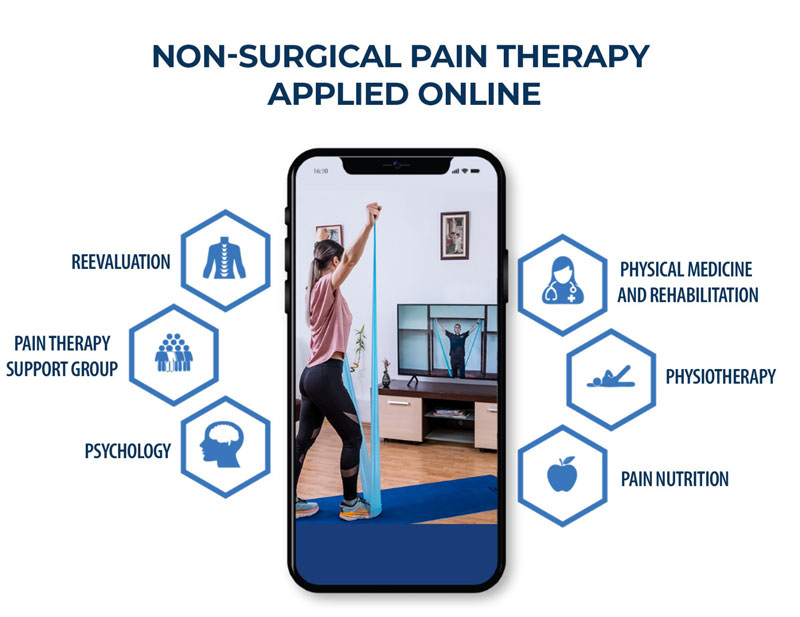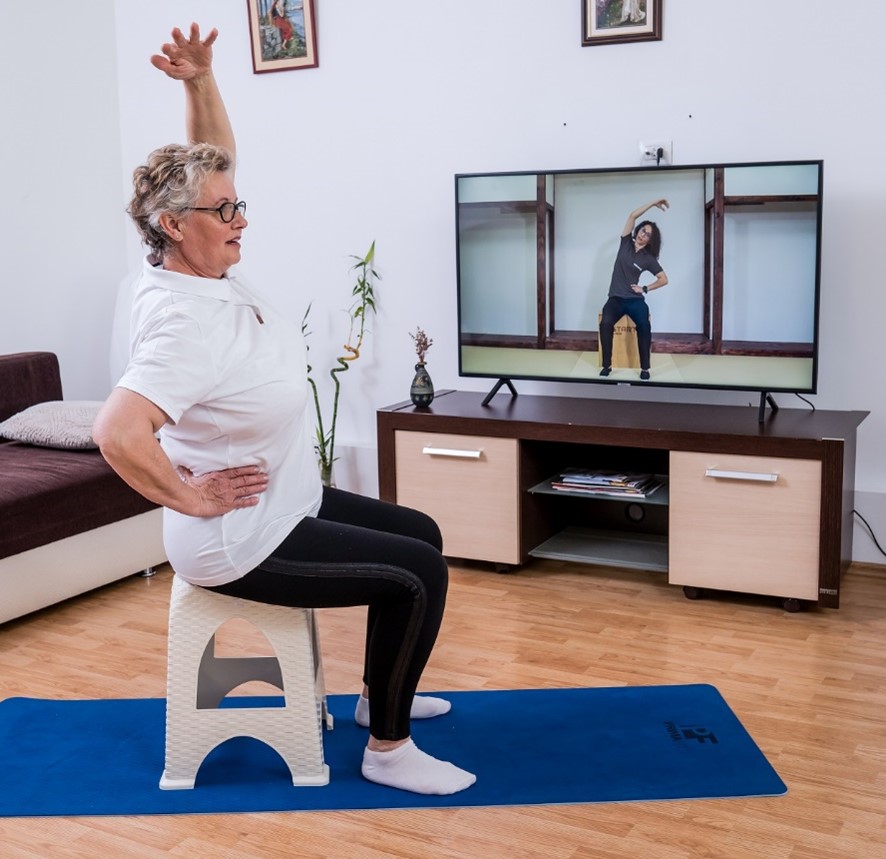A European medical rehabilitation platform based in Romania has made a significant contribution to the non-surgical treatment of chronic low back pain, including lumbar disc herniations, through a fully online pain management system. Designed by physiotherapist Alexandru Ilie and recently presented at the World Congress of Innovation in Rehabilitation and Physiotherapy in Istanbul 2024, this innovative model offers patients worldwide access to effective and non-invasive therapeutic solutions.

What is Non-Surgical Pain Therapy in an Online Setting?
Non-surgical pain therapy aims to alleviate symptoms and improve quality of life through a structured program that combines physical therapy, psychological counseling, and nutritional interventions. The platform, RestartiX, created by Alexandru Ilie and Daniel Alexandrescu, integrates these components into a telemedicine system, enabling patients to access personalized rehabilitation regardless of location.
Traditionally, such therapies require in-person appointments, but this platform successfully provides remote support through pre-recorded video sessions and continuous guidance from physical therapists and rehabilitation doctors. The program specifically targets patients with chronic low back pain who have been diagnosed with disc degeneration through imaging investigations.
Program Structure and Applied Methods
The system includes a well-structured treatment plan, applied online and coordinated by a multidisciplinary team. Each component is essential in achieving recovery goals and pain relief:
- Physical Therapy: Patients begin with an initial consultation with a rehabilitation specialist, followed by a personalized treatment plan consisting of at least 40 physical therapy sessions held four times a week, based on the “Mirror-Me” model. In this method, patients follow pre-recorded exercise videos, replicating the movements. This mode of care, as evidenced by multiple studies*, has shown to be as effective as in-person treatments conducted in a physical clinic.
- Psychological Support: Chronic pain’s impact on mental health is significant, so the program includes evaluations and online group sessions with a specialized psychotherapist. These sessions help patients manage pain and improve emotional resilience.
- Nutritional Counseling: An anti-inflammatory diet is integrated into treatment, with patients receiving personalized advice from specialist doctors on adopting a diet that can reduce inflammation and support the recovery process. The plan includes foods rich in antioxidants and Omega-3 fatty acids, known for their inflammation-reducing properties.
- Medical Supervision: The program offers continuous monitoring from a rehabilitation specialist who assesses progress, adjusts the treatment plan, and provides necessary support throughout the therapy.
Program Effectiveness and Outcomes
Evaluations from the study presented by Alexandru Ilie at the Global Congress on Innovations in Physiotherapy & Rehabilitation Medicine in 2024 Istambul, Turkey used the Visual Analog Scale (VAS) to measure pain intensity, along with functional and psychological tests to evaluate patients’ emotional and functional progress. The results showed significant pain reduction and improvement in patients’ functionality and well-being, all achieved without surgical interventions.
This integrative program demonstrates that online non-surgical therapy can effectively treat patients with degenerative lumbar issues. The results highlight that online therapy access offers substantial benefits for those needing rehabilitation, opening new avenues for patient care.
Advantages of the Telemedicine Approach
This online rehabilitation system provides numerous advantages:
- Global Access: Patients worldwide can access the program, eliminating geographical barriers and allowing quick access to specialists.
- Economic Efficiency: Both patients and the medical team save time and resources.
- Flexibility and Convenience: The program is available 24/7, allowing patients to join video sessions according to their schedules.
- Improved Compliance: The ability to perform exercises from the comfort of home increases compliance and reduces anxiety associated with clinic visits.
Challenges and Areas for Improvement
While the online non-surgical pain therapy system offers numerous benefits, some challenges remain:
- Technical Difficulties: Some patients may struggle with internet quality or navigating the online platform.
- Motivation and Discipline: Without direct physical supervision, patients need more self-discipline to follow the program consistently.
- Difficulty in Measuring Each Component’s Efficiency: Since the program integrates multiple therapies, it is challenging to determine which therapy has the most impact on pain reduction. Future studies could isolate these components to analyze the effectiveness of each.

Conclusion: The Future of Telemedicine-Based Rehabilitation
The pain management system developed by Alexandru Ilie and implemented through the RestartiX platform represents an innovative step forward in medical rehabilitation. It opens a new era of non-surgical rehabilitation, emphasizing global accessibility and personalized treatments offered through telemedicine. This online approach provides an effective alternative for patients looking to avoid surgery, proving that successful treatments are not limited to in-person appointments.

As medicine and technology continue to evolve, telemedicine for low back pain rehabilitation is becoming an increasingly valuable option for patients worldwide, offering modern, convenient, and customized treatments directly from the comfort of their own homes.
https://www.sciencedirect.com/science/article/pii/S1836955324000171
https://www.psychiatry.org/news-room/apa-blogs/chronic-pain-and-mental-health-interconnected





